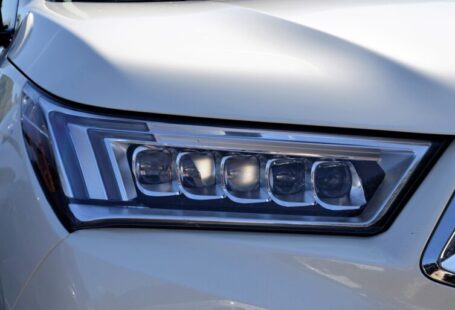Things to Consider When Installing a Custom Sport Bike Exhaust
If you’re planning to install a custom sport bike exhaust, there are several things to consider before you do. These include whether you want a full system or a slip-on. You’ll also need to figure out which materials to use, and how to position the spark plugs and jets.
Slip-on vs full-system
There are many ways to increase the performance of your motorcycle. One of the most common upgrades is to change the exhaust. This can be a good way to improve the sound and weight of your bike, which can be a good way to get a little extra pep.
In general, there are two basic types of exhaust systems. Slip-on and full-system. Each can offer some benefits and drawbacks. It’s important to understand the differences before you make a decision.
Unlike a slip-on, a full-system replaces the entire exhaust system from the head pipe down to the tailpipe. It also requires a bit more work than a slip-on. However, it offers a higher performance boost, is much lighter, and is more customizable. A full-system is also more expensive than a slip-on.
Choosing the best type of exhaust can be confusing. What you need to decide is whether you want a simple, easy to install, inexpensive system, or one that requires a little more effort.
Mild steel vs stainless steel
There are different materials to choose from when deciding on a custom sport bike exhaust. The choice between mild steel and stainless steel can make a big difference in the appearance and function of your exhaust system. You want to ensure that you’re making the right selection.
Mild steel is a popular choice for exhaust pipes. They are durable and are not as prone to rusting as stainless steel. However, they are a bit more expensive.
Stainless steel is a good choice for exhaust systems because it is resistant to rust and corrosion. It has excellent high-temperature properties. A properly constructed stainless steel project can give the impression of skill and quality. Stainless is also a non-magnetic material. This makes it ideal for many applications, including those in the aerospace industry.
The most common types of stainless steel are 409 and 304. These two alloys are used by most major exhaust manufacturers.
316L is an extra low-carbon grade that is used extensively in marine exhausts. While the carbon content is lower, the chromium content is higher. With a higher chromium content, the material is nearly impervious to corrosion.
Properly positioned spark plugs and jetting
If you want your custom sport bike to sound and look great, then you should consider properly positioning your spark plugs and jetting your exhaust system. You can do this a number of ways. However, if you don’t know what you’re doing, you could end up with a sluggish, unreliable engine.
In order to do it right, you need to understand your engine’s exhaust system. It can be tricky to get a handle on. Some bikes require body panels to be removed in order to gain access. Depending on the type of modifications you make, you may also need to relocate oxygen sensors.
The best way to do this is to find out what’s going on at your fingertips. This can be achieved by checking your engine’s spark plugs and the position of your pistons. By looking at your spark plugs, you can get a pretty good idea of where you’re going to need to make adjustments.
Aftermarket exhaust is the silver bullet
Exhaust systems are a key part of any motorcycle’s appearance, sound, and performance. They can also help you save weight and improve horsepower. However, the best aftermarket exhausts are those that are designed for performance.
There are a lot of aftermarket exhaust options to choose from. Most come in a slip-on style, which makes them easy to install. Some are even made of carbon fiber. Changing your exhaust can make a noticeable difference in your bike’s performance.
The best aftermarket exhausts will give your bike a better sound and boost its horsepower. It’s a great way to enhance your style, too.
Many of the new aftermarket exhausts are made from a high quality, lightweight alloy like titanium. They are also easier to install than the old stock exhausts. Using a tool like a 3/8″ socket is a good idea, as it can be used to hold the stud nuts in place.
Unlike race pipes, most aftermarket exhausts are not street legal. This makes them an ideal choice for competition, as you won’t have to worry about noise regulations.



